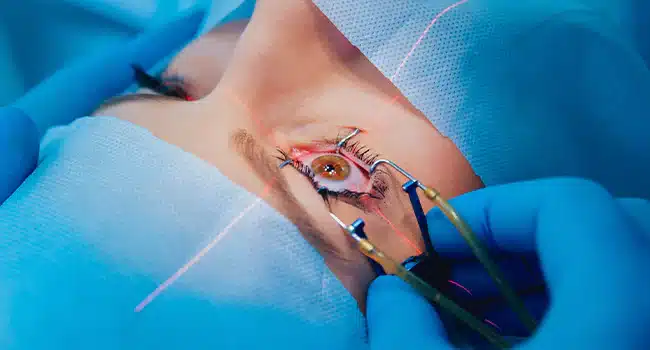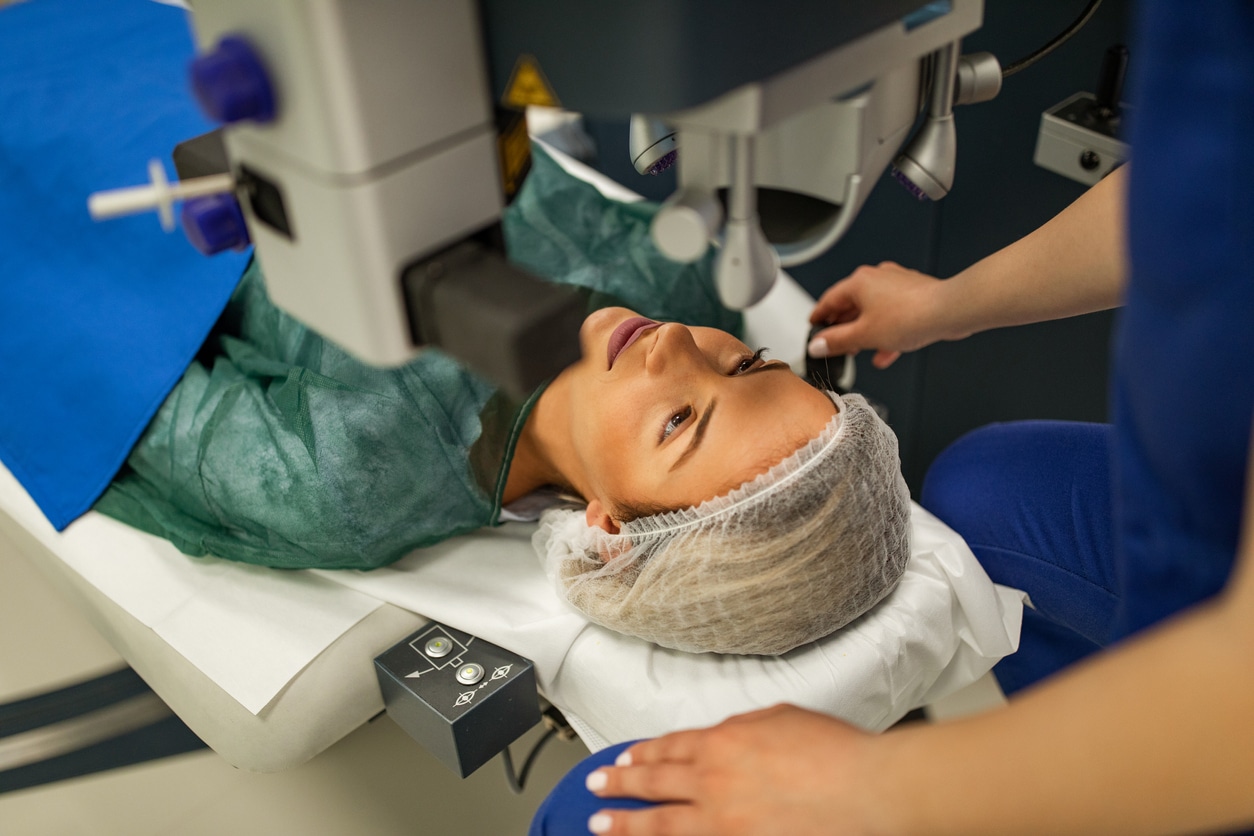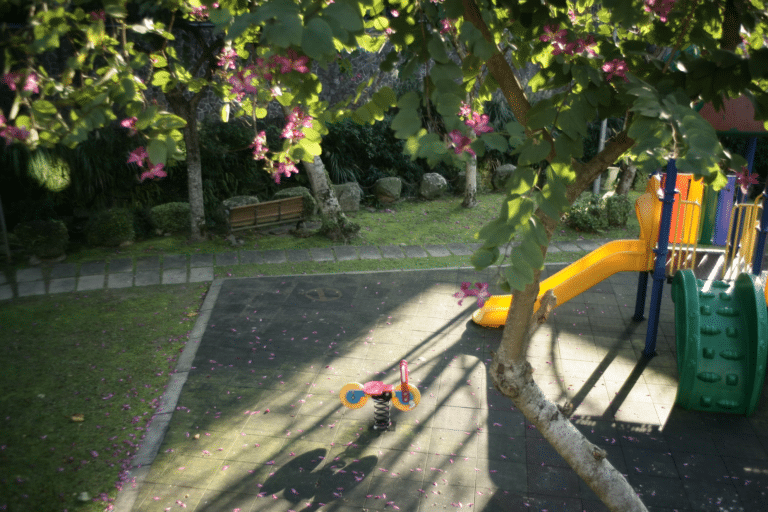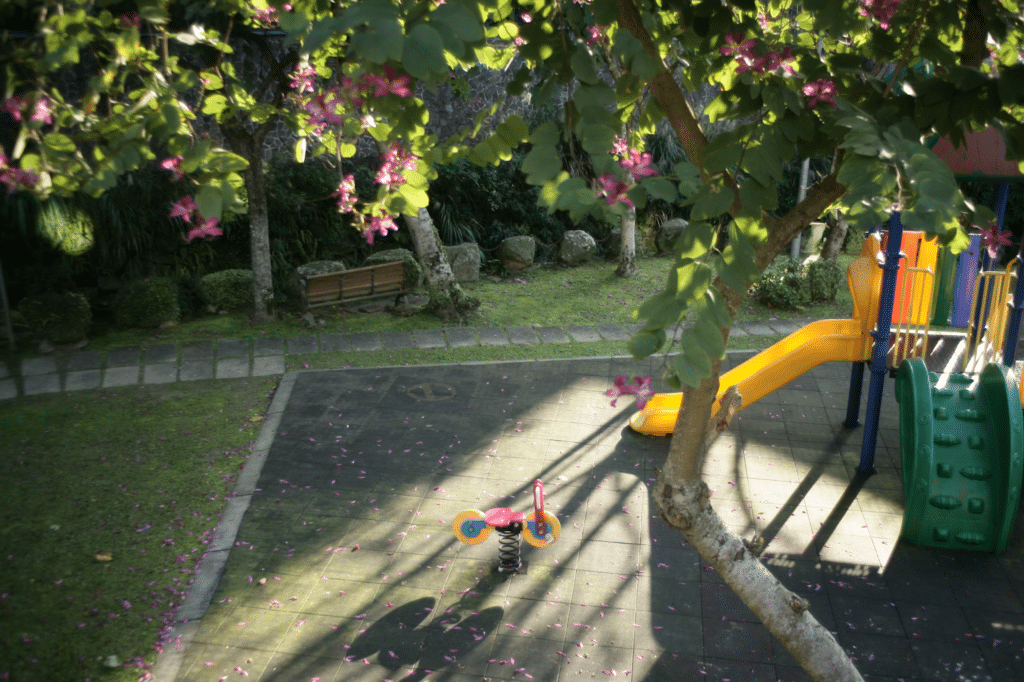If you’re considering LASIK eye surgery, understanding the process can help you feel more confident and prepared. LASIK is a widely used procedure designed to correct vision problems, such as nearsightedness, farsightedness, and astigmatism.
From the first consultation to the final recovery phase, knowing each step will give you peace of mind and help you make informed decisions. In this blog, we’ll take you through the entire process of LASIK, highlighting what to expect at each stage—from your initial appointment to your recovery period.
Understanding the LASIK Process

LASIK (Laser-Assisted In Situ Keratomileusis) is a common eye surgery that reshapes the cornea to improve vision. It uses a precise laser to adjust the cornea’s curvature, allowing light to be focused correctly on the retina. This can eliminate the need for glasses or contact lenses for many patients.
Understanding the LASIK surgery process is essential because it involves several steps, each of which plays a crucial role in the procedure’s success. Being well-informed can reduce anxiety and help you have realistic expectations for the outcome. Additionally, knowing the process will allow you to ask the right questions and follow through with proper aftercare, ensuring the best results.
Initial Consultation
Your LASIK journey begins with an initial consultation, where the surgeon evaluates your eyes to determine if you’re a suitable candidate. During this appointment, the doctor will perform several tests and discuss your vision history. Here’s what you should bring to your consultation:
- Medical records, including any eye-related history
- Your glasses or contact lens prescription
- A list of any medications you’re currently taking
The surgeon will assess the thickness of your cornea, pupil size, and overall eye health. This evaluation helps to determine if LASIK is the right solution for your vision problems. Additionally, this is the time to discuss potential risks, benefits, and expected outcomes. It’s important to ask any questions and understand all aspects of the surgery before proceeding.
Pre-Operative Assessment
Once you’re confirmed as a candidate for LASIK surgery, the next step is a thorough pre-operative assessment. During this visit, the surgeon will conduct a detailed examination of your eyes, which may include corneal mapping and measurements. These tests create a precise blueprint of your eyes, which helps guide the laser during surgery.
You’ll also meet with your surgeon to review the procedure in detail. This is an opportunity to finalize your surgical plan, understand the steps involved, and ensure you are well-prepared for the day of the procedure.
Day of the Surgery

On the day of your LASIK surgery, there are a few things to keep in mind. You should avoid wearing any makeup, lotions, or perfumes, as these can interfere with the surgery. Comfortable clothing is recommended since the procedure is relatively quick but may require some time in the clinic.
The LASIK procedure is straightforward, and your surgeon will guide you through it step-by-step. Here’s what happens during the surgery:
Anesthetic Application
To ensure you don’t feel any pain during the surgery, your surgeon will apply numbing eye drops. These drops work quickly, and you’ll remain awake but completely comfortable during the procedure.
Corneal Flap Creation
A small, thin flap is created on the surface of your cornea. This flap is gently lifted to allow the surgeon access to the underlying corneal tissue that will be reshaped.
Corneal Reshaping
Using a laser, your surgeon will reshape the cornea based on your specific eye measurements. The laser precisely adjusts the curvature of the cornea to improve how light is focused on your retina.
Flap Repositioning
After the corneal reshaping is complete, the flap is carefully repositioned. It will naturally adhere to the eye without the need for stitches, promoting faster healing.
Immediate Post-Operative Care
Right after surgery, your surgeon will check your eyes to ensure everything looks good. You’ll be given protective shields for your eyes and specific post-operative instructions to follow, such as avoiding rubbing your eyes and resting.
Post-Surgery Care
The first 24 hours after LASIK is crucial for your healing. Your vision may be blurry, and your eyes might feel sensitive, but this should improve by the next day. Follow these guidelines for post-surgery care:
- Rest your eyes as much as possible
- Use prescribed eye drops to prevent dryness and infection
- Wear the provided eye shields when sleeping to avoid accidental rubbing
Your first follow-up appointment will typically be scheduled within 24-48 hours after surgery. During this visit, your surgeon will check your healing progress and vision clarity. It’s essential to attend all follow-up appointments and report any unusual symptoms, such as severe pain or vision loss, as they could indicate complications that need immediate attention.
Recovery and Long-Term Care
Recovery after LASIK is generally quick. Most people experience improved vision within a few days, although it can take a few weeks for your vision to fully stabilize. You should avoid strenuous activities and swimming during the first few weeks to protect your eyes.
Long-term care involves regular eye checkups to ensure your eyes stay healthy. It’s important to protect your eyes from UV rays by wearing sunglasses outdoors and to follow any additional care instructions provided by your doctor. Most people can return to their normal activities, including work and exercise, within a few days, but always consult your surgeon before resuming more demanding tasks.
Final Thoughts
LASIK surgery offers a life-changing opportunity to achieve better vision, often without the need for glasses or contacts. By understanding each step of the process, from consultation to recovery, you’ll be better prepared and more comfortable with your decision.
Following your surgeon’s advice and maintaining proper aftercare will give you the best chance for a smooth recovery and long-lasting results. Always prioritize your eye health by keeping up with your follow-up appointments and protecting your vision for the future.
















